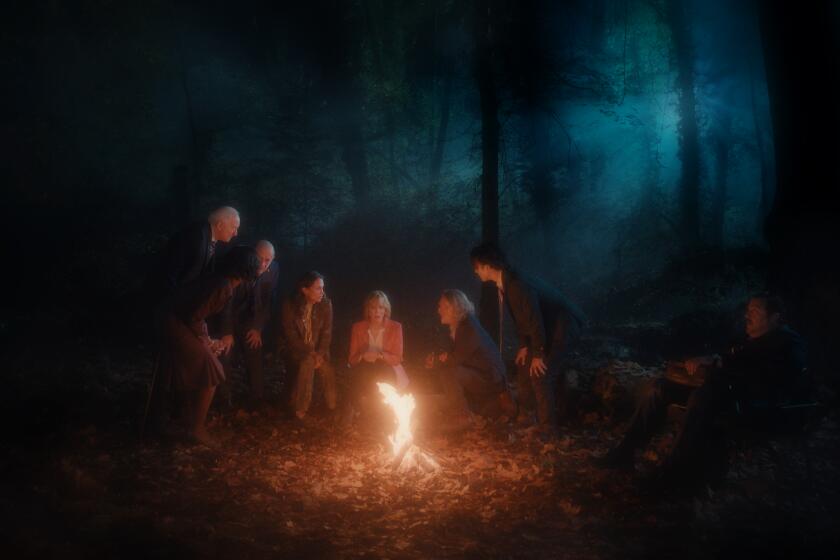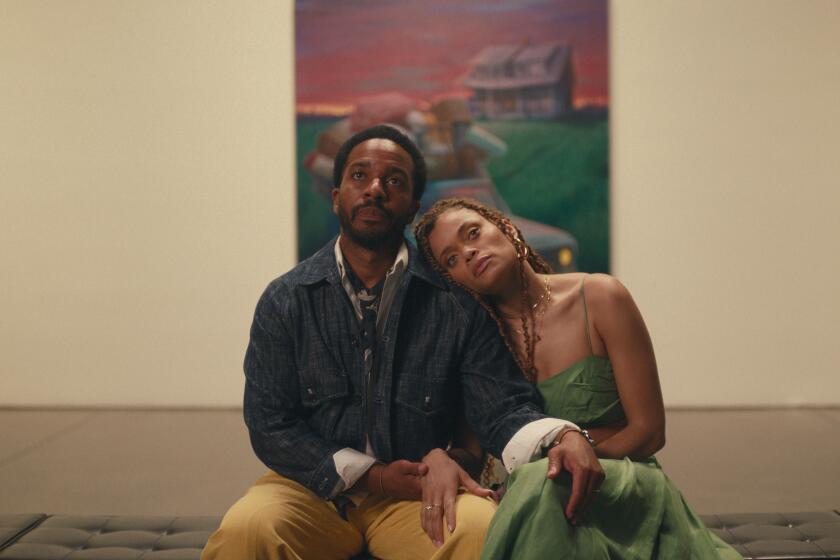Rare Films Set at Antonioni Retrospective
The UCLA Film Archive’s “Dear Antonioni . . . the Complete Works of Michelangelo Antonioni” continues Friday at 7:30 p.m. in UCLA’s Melnitz Theater with “The Lady Without Camellias” (1953) followed by “The Girlfriends” (“Le Amiche,” 1955), two of the director’s fine, early, rarely revived films.
Like “The Story of a Love Affair,” which opened the series last week, “The Lady Without Camellias” and “The Girlfriends” are more accessible than his later, more famous pictures, yet as mood pieces point in the direction of his increasingly stylized, groundbreaking work.
For all its low-key satire of the vulgarities of commercial Italian filmmaking, “The Lady Without Camellias” is a singularly compassionate film. Gorgeous Lucia Bose plays a starlet whose beauty makes her an overnight sensation. A producer (Gino Servi) who is infatuated with her rushes her into marriage and, despite her inexperience, into playing Joan of Arc. At the Venice Film Festival she’s laughed off the screen. Meanwhile, the unhappy starlet has become vulnerable to the attentions of a suave young diplomat (Ivan Desny).
If anything, “The Lady Without Camellias” seems timelier than ever because it can be viewed as a strong feminist work, the story of a beautiful woman trapped both in her professional and private lives. Shot in shades of slate gray and fitted with an elegiac score, “The Lady Without Camellias” is a work of graceful restlessness that anticipates Antonioni’s bolder depictions of alienation.
The superb “The Girlfriends,” also shot in slate hues, centers on five young women of Turin’s upper-middle class, their friendships and the men in their lives.
Filmed in Italy’s somber Po Valley, “Il Grido” (“The Cry,” 1957), which screens Saturday at 7:30 p.m., is that rarity in movies: a serious study of a man’s unrequited love. As Aldo, who has been rejected by Irma (Alida Valli), the woman he loves, Steve Cochran, a reliable Hollywood heavy, got a unique chance to give full range to his considerable abilities.
Running throughout the film is Antonioni’s usual strain of ambiguity. Would the story have ended differently had Aldo’s former girlfriend (Betsy Blair), who has taken him in, admitted that Irma had deposited his belongings in person? When the restless Aldo finally returns to his hometown, does Irma run to meet him because she’s unhappy with her new husband?
“Il Grido” is as beautifully composed as its piano solo score, and the long shots of Aldo and his forlorn little daughter (Mirna Girardi) trudging down a highway are reminiscent of Van Ruisdael’s 17th-Century landscape “The Wheatfields,” with its overcast sky and deep perspective. “Il Grido” will be preceded by four shorts.
On Jan. 15, 1960, Antonioni completed shooting what is arguably his finest film: “L’Avventura,” which remains timeless in its impact; not even the clothes, hairstyles or cars look dated, so elegant are they. “L’Avventura,” which screens Sunday at 7:30 p.m. following two shorts, is the ultimate nothing-much-happens/everything-happens movie.
A group of chic, sophisticated people take a yacht to a small, rocky Sicilian island, where one of the women (Lea Massari) disappears. Her best friend (Monica Vitti) replaces the woman in the affections of her fiance (Gabriele Ferzetti) while they are ostensibly on a search for Massari--so much for plot.
For Antonioni, the mystery here is not so much the fate of Massari but that of the heart and soul of the individual in an alienating, disaffected society. Direct, forthright, honest and concerned, Vitti represents what we should all strive to be, whereas Ferzetti stands for all the pitfalls of contemporary life: compromise, indifference and self-indulgence to the extent that this sold-out architect can make love to Vitti without ever giving a thought to the mysteriously missing Massari. Vitti, genuine in her love for Ferzetti, cannot help but experience twinges of guilt.
“L’Avventura” remains one of the great examples of using the full resources of the camera to express meaning. As critic Gene Youngblood has aptly remarked, “The physical and mental landscape become one.” Three landmark moments stand out: Ferzetti being confronted with the mediocrity of his career when he comes upon the glorious, ancient facades of the town of Noto and his subsequent, deliberate spilling of ink upon a student’s architectural sketch of a niche on a Noto building, and finally, Vitti’s hesitating but real gesture of forgiveness that concludes the film. “L’Avventura” is the most modern of masterpieces.
Information: (310) 206-FILM.
More to Read
Only good movies
Get the Indie Focus newsletter, Mark Olsen's weekly guide to the world of cinema.
You may occasionally receive promotional content from the Los Angeles Times.










